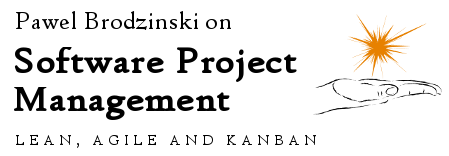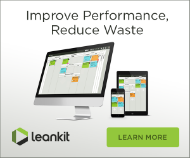I really liked Scrum versus Kanban session I made along with Piotr during Engineering Academy “Diamond Polishing” (both sites in Polish only). The theme of my part of presentation and the following discussion was the sentence I took from Henrik Kniberg must-read article on Kanban:
“I don’t know, experiment.”
– What kind of columns I should have on Kanban Board?
– I don’t know, experiment. Our team’s Kanban Board looks like that. But don’t take is as a universal schema.
– How many columns should be there?
– I don’t know, experiment. See our board as example but don’t treat it as a bible.
– What limits should I set?
– I don’t know, experiment. Have I shown you our board we came up with? You know, that’s the result of our experiments, yours will be different.
– How big should be the team to make Kanban most effective?
– I don’t know, experiment. There are 5 of us, but your team is different I guess.
– Should we put bugs along with MMFs on Kanban Board?
– I don’t know, experiment. We don’t. Others do. How about you?
– How long should we experiment before Kanban Board is ready?
– I don’t know, experiment. We do it all the time because I’m never 100% happy. If you think yours is perfect than stop. If you change your mind then start again.
If there’s one universal advice applicable basically to every light-weight method it is “I don’t know, experiment.” Light-weight methods leave many things flexible – you can apply them this way or another or don’t apply them at all. This creates a place for experimenting with what works well and what doesn’t.
The less the method prescribes, and Kanban prescribes close to nothing, the more you can, and should, experiment. Especially that little prescription means you need to add some practices to run projects reasonably.
Check out the rest of Kanban Story.


 Subscribe RSS feed
Subscribe RSS feed Follow on Twitter
Follow on Twitter Subscribe by email
Subscribe by email



0 comments… add one